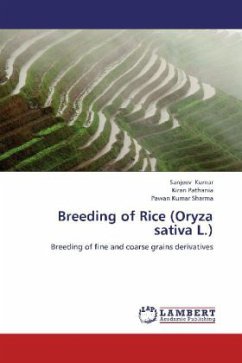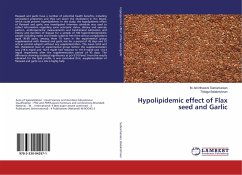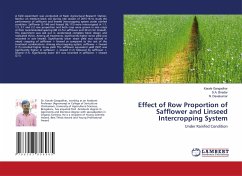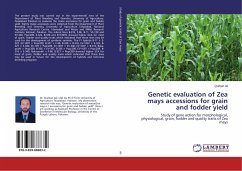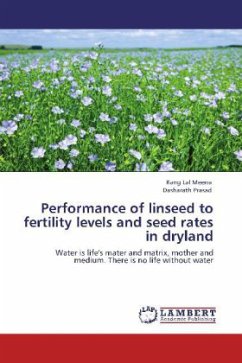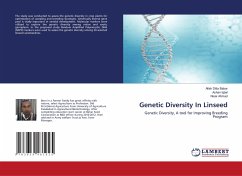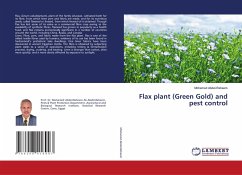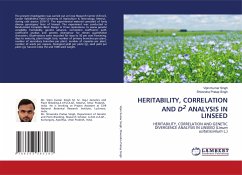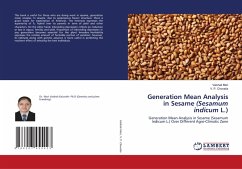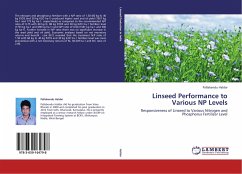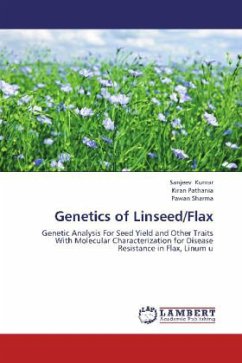
Genetics of Linseed/Flax
Genetic Analysis For Seed Yield and Other Traits With Molecular Characterization for Disease Resistance in Flax, Linum u
Versandkostenfrei!
Versandfertig in 6-10 Tagen
39,99 €
inkl. MwSt.

PAYBACK Punkte
20 °P sammeln!
This book is useful for the researchers, scholars working on the linseed in universities/Institutes/Centres. The genotypes used in the present investigation were found to have high fatty acid content ( -Linolenic-acid). Higher amount of linolenic acid in the experimental material shows its unsuitability for edible purpose but suggests its usefulness for industrial purposes. Of the 60 RAPD primers used in the present studies for identification of molecular markers linked to the wilt disease, only 12 primers were polymorphic but did not generate polymorphism among the bulks. Hence, proposed prim...
This book is useful for the researchers, scholars working on the linseed in universities/Institutes/Centres. The genotypes used in the present investigation were found to have high fatty acid content ( -Linolenic-acid). Higher amount of linolenic acid in the experimental material shows its unsuitability for edible purpose but suggests its usefulness for industrial purposes. Of the 60 RAPD primers used in the present studies for identification of molecular markers linked to the wilt disease, only 12 primers were polymorphic but did not generate polymorphism among the bulks. Hence, proposed primers used in the present study were not useful and more random primers should be used to identify markers linked to the disease in future breeding programme.



